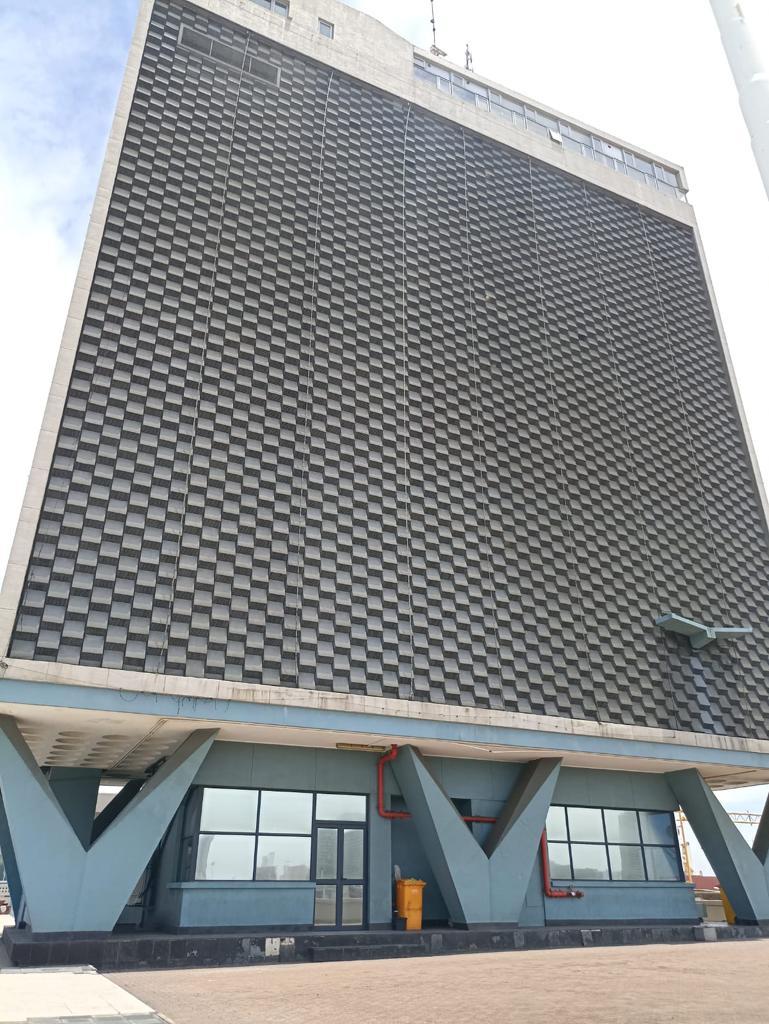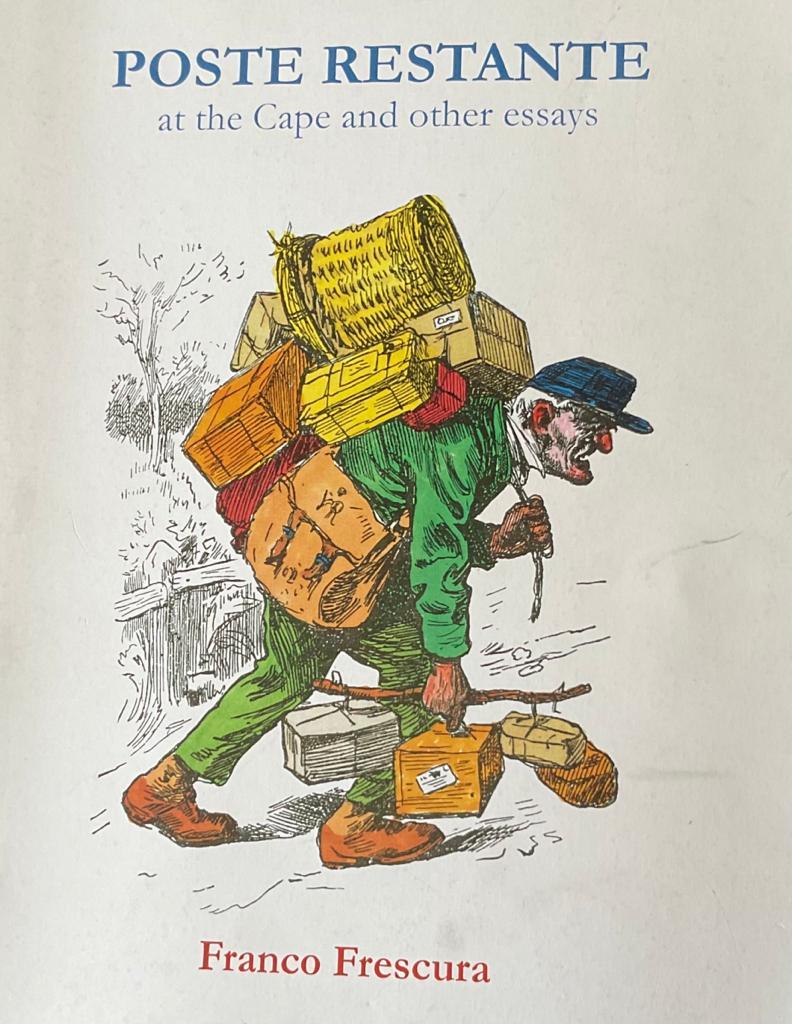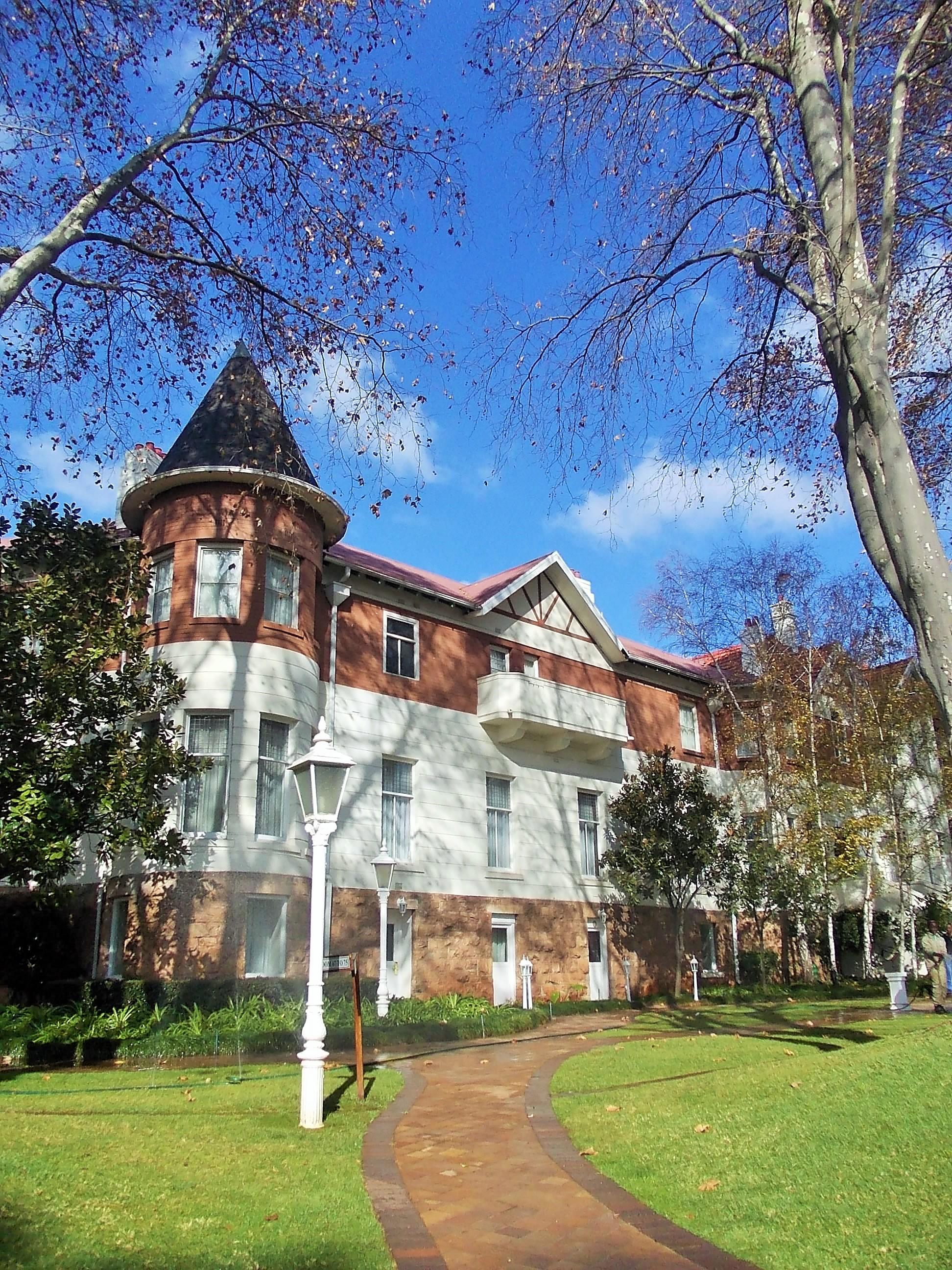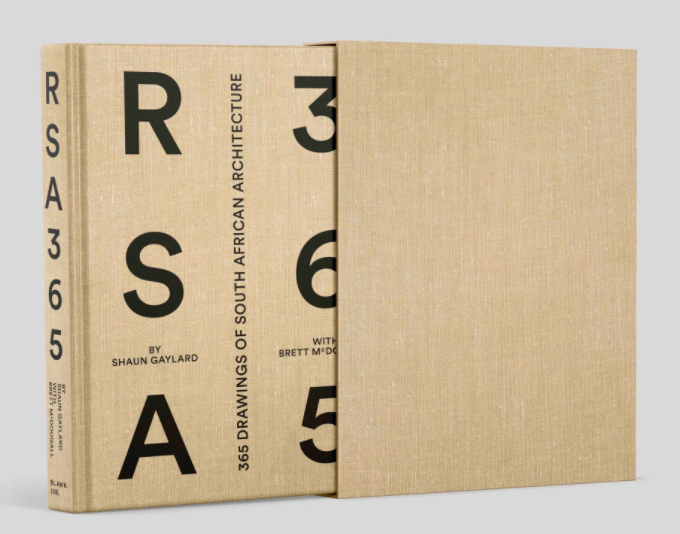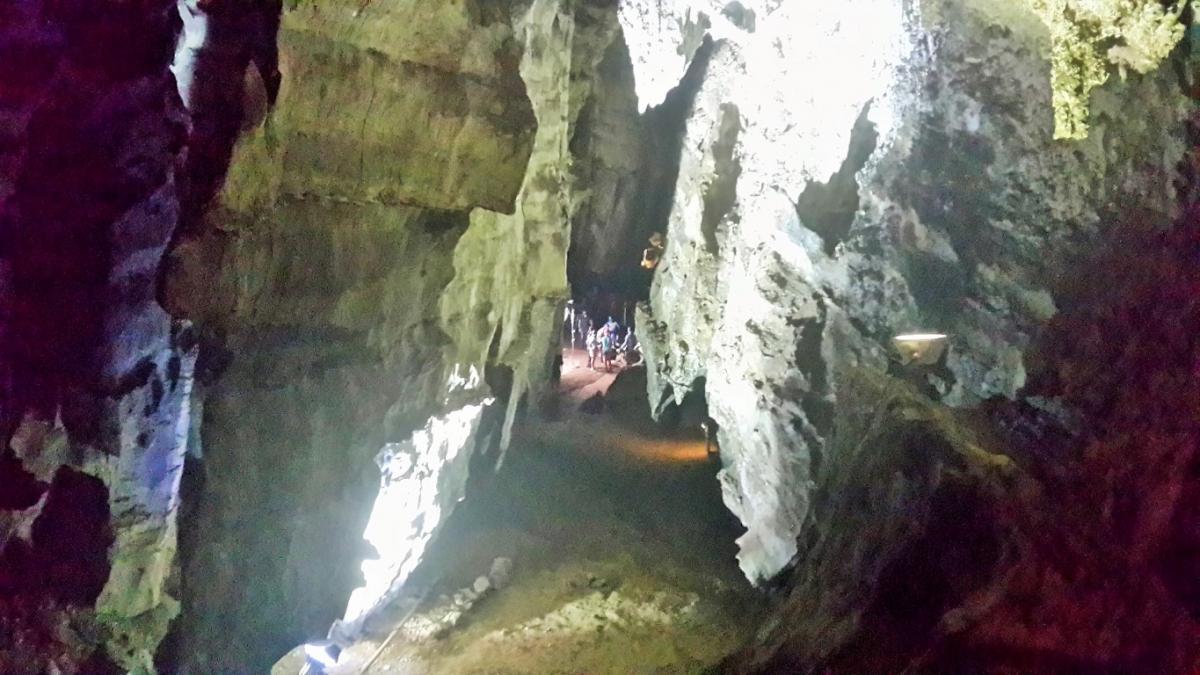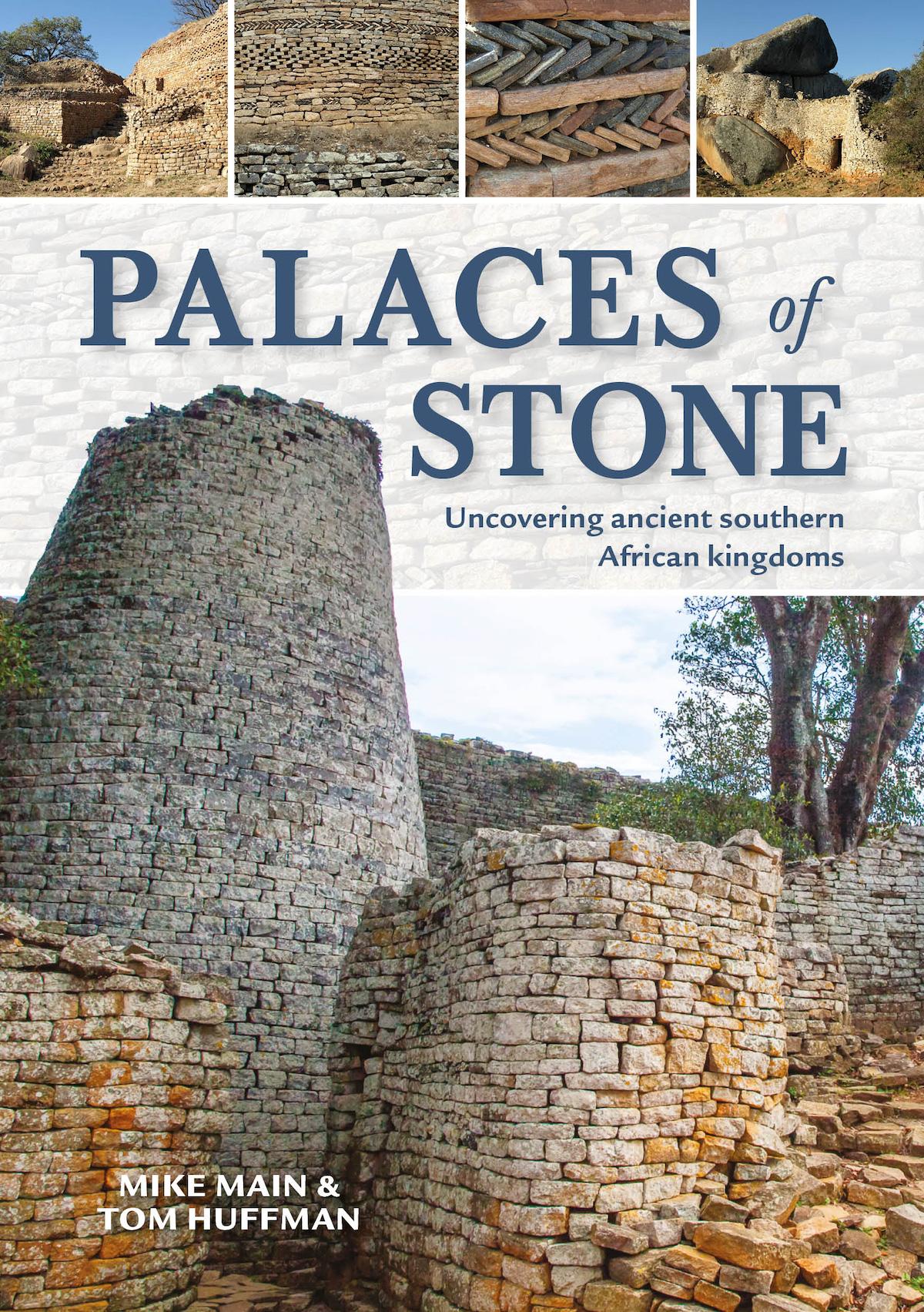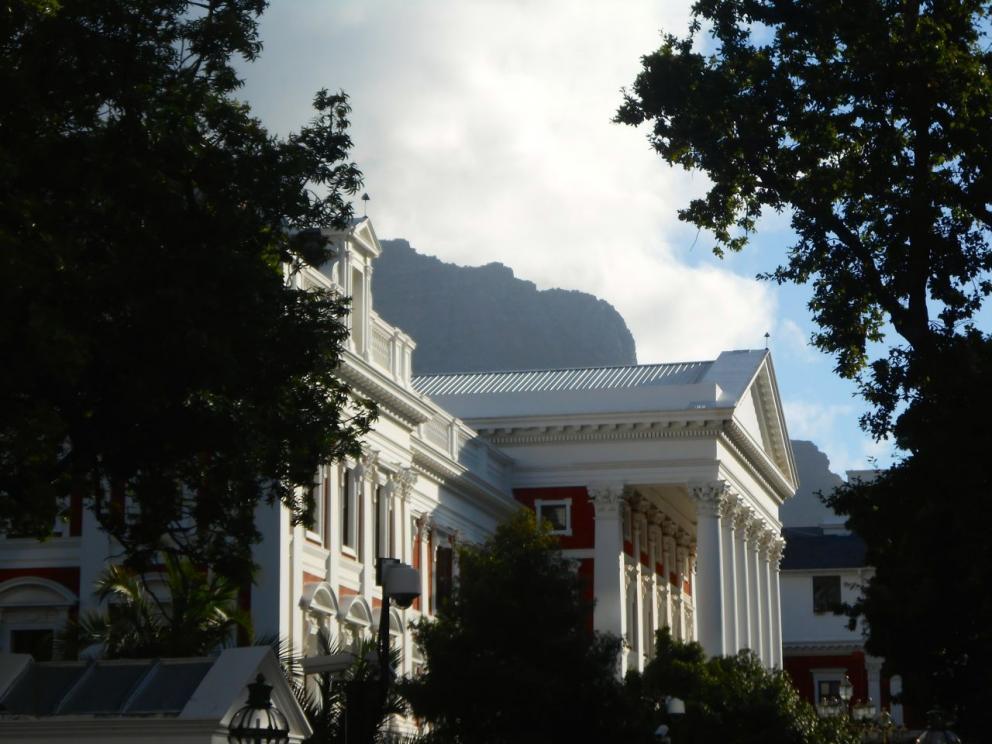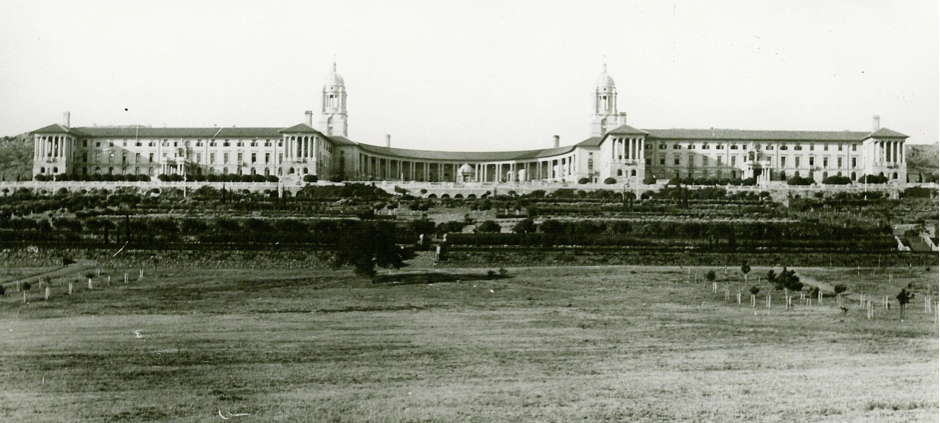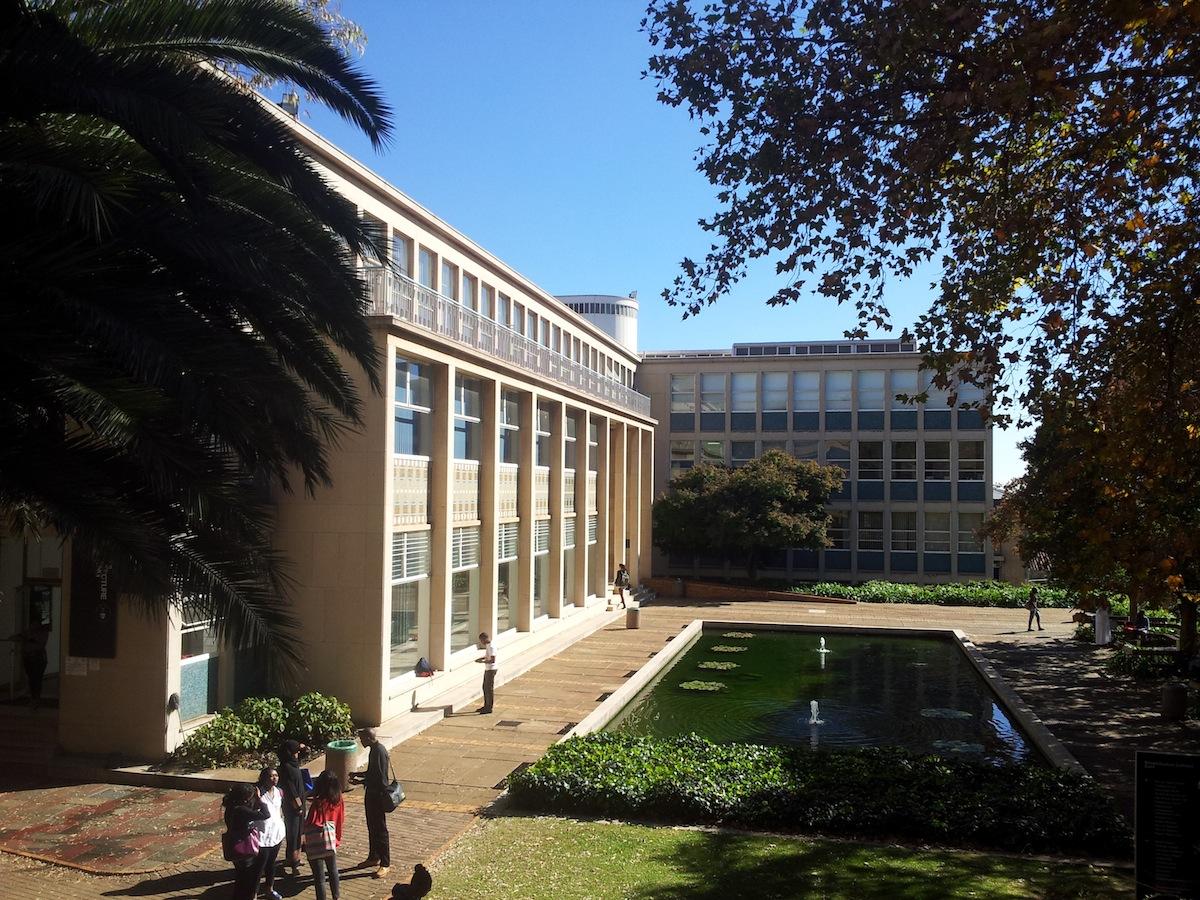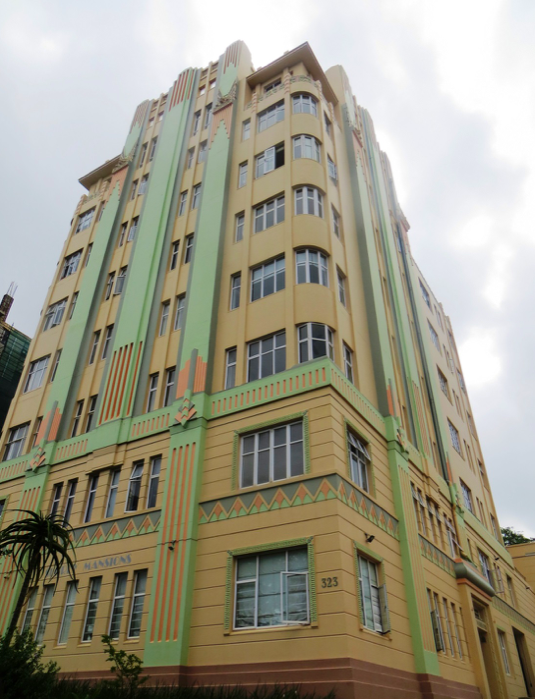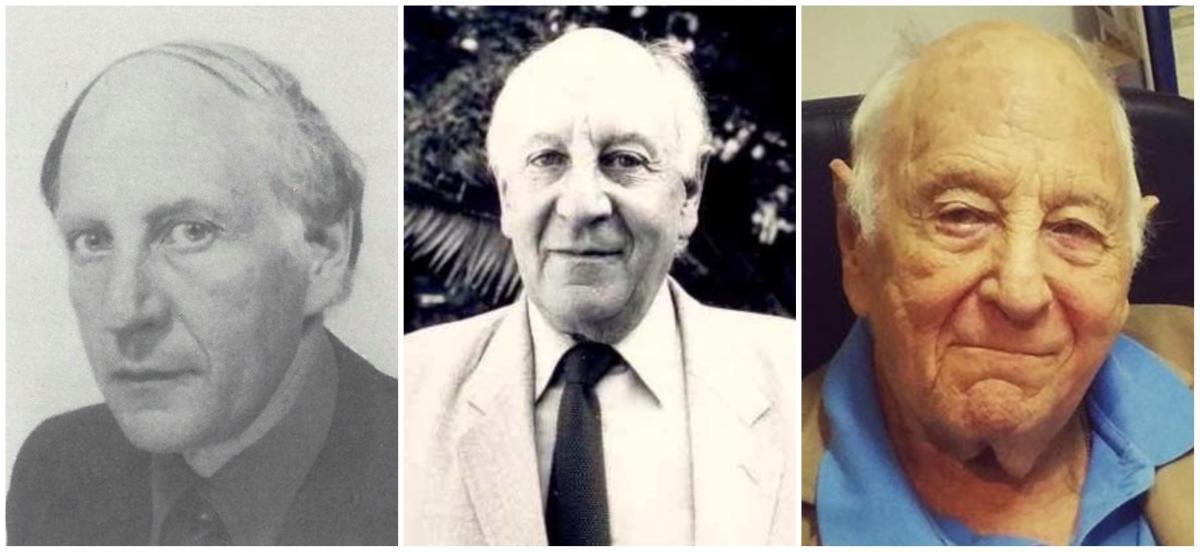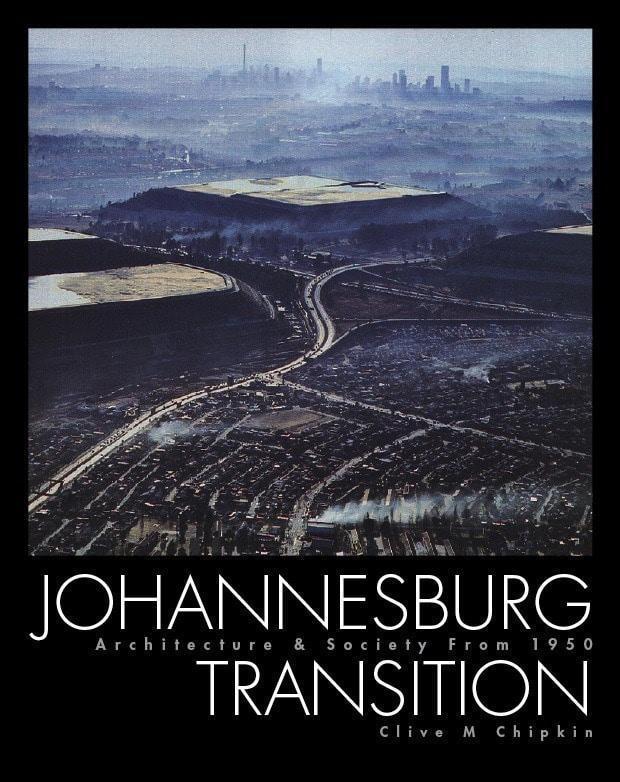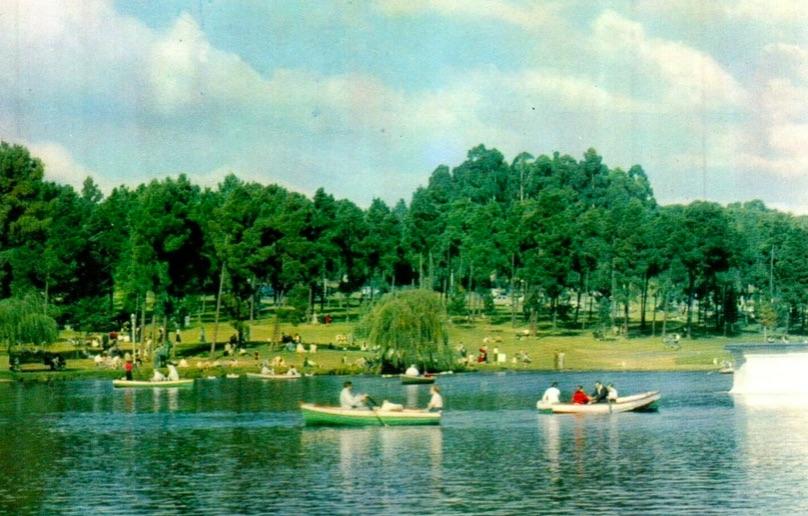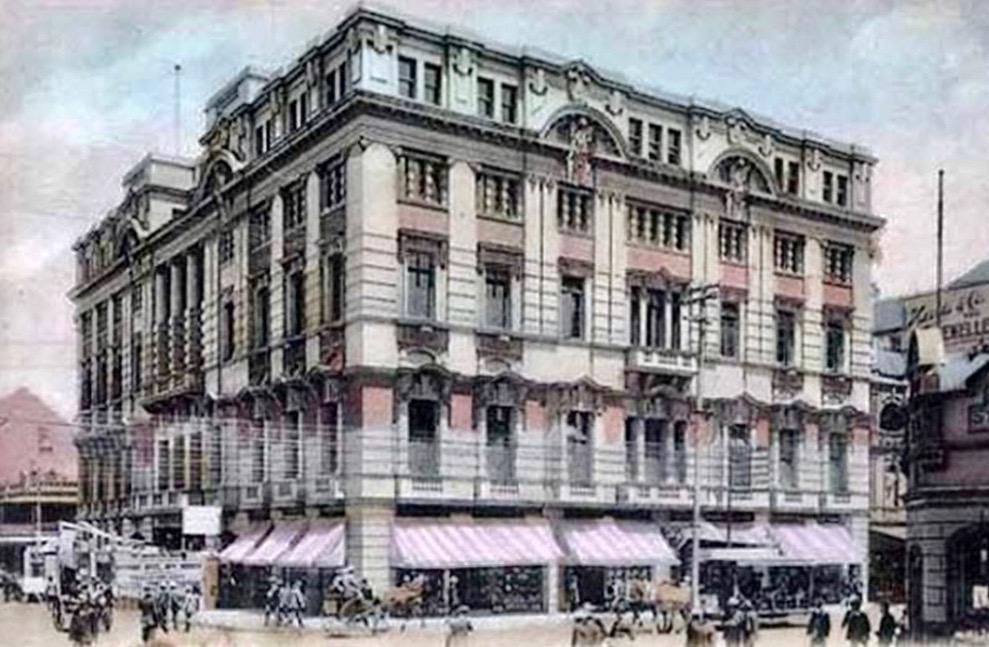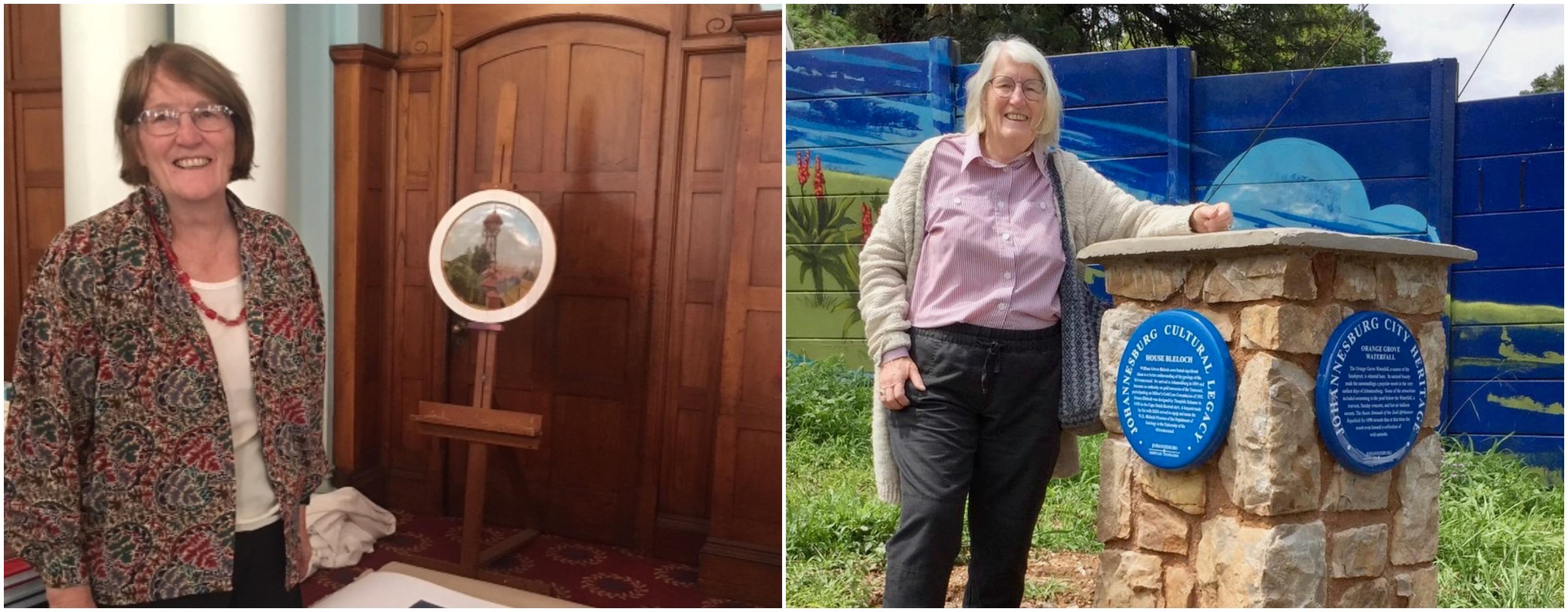
Disclaimer: Any views expressed by individuals and organisations are their own and do not in any way represent the views of The Heritage Portal. If you find any mistakes or historical inaccuracies, please contact the editor.
There are very few people in the heritage world that don't know the name Kathy Munro. She is a writer, speaker, reviewer, activist, teacher, mentor, organiser, friend and so much more. We asked her a few questions about her life in heritage and beyond...
What excites you at the moment?
The case of the Ocean Terminal complex and the Durmarine building in Durban – important modernist buildings dating back to 1962. The intention of Transnet is to demolish, flatten and create an unimaginative, historically rootless car export parking area for storing and shipping cars for export. I find this makes me angry because it is the approach of a philistine to think it is OK to demolish; there is an opportunity to work with all those dreams and realities created in the past by fine architects; for a heritage building to live it must have a future purpose but it is imagination that can give us that opportunity. A fine example of conversion so that a heritage building can live again is the Gauteng Legislature created from the Johannesburg City Hall complex done by the late Marcus Holmes and Mira Fassler.
Ocean Terminal Building (Kathy Munro)
What books are your reading?
The Man before the Mahatma, MK Gandhi , Attorney at Law by Charles DiSalvo; a biography of Milner by Richard Steyn; Boris Gorelik’s delightful book on Trechikoff and that led me to dip into other books on Trechikoff and the Irma Stern biography by Neville Dubow. Brett McDougall and Shaun Gaylard’s RSA 365. Also finished Franco Frescura’s book of essays on Postal History of the Cape.
Book Cover
Why do each of these books appeal?
The Gandhi book - an extraordinary book on Gandhi’s legal career from his time in London reading for the English bar, his efforts to establish a practice in India, not once but twice and then the slow evolution of his political ideas through legal challenges and experience in South Africa; beautifully researched and written by Charles Di Salvo.
The Milner book by Richard Steyn - this is good because it looks at the whole man and his entire career from school boy to the part Milner played in the First World War driving through a settlement in 1918; it appeals because it is written by a competent journalist who has written widely on other players in 20th century politics such as Smuts, Botha and Churchill. Steyn does his homework by reading all the secondary sources. In the case of the Milner book there are still some secrets kept. Milner interests me because he lived at Sunnyside (today the Holiday Inn Hotel and one of my favourite tranquil places for a coffee though the décor is not heritage sympathetic.
Sunnyside (The Heritage Portal)
The Tretchikoff book – because Gorelik, in a non judgemental way, tackled why Tretchikoff’s art was dismissed for decades by the art establishment (Stern apparently behind blocking his first establishment gallery exhibition). Tretchikoff went on to run his “shows” in apartment stores and that was when he entranced me and signed my print of his Balinese Girl when I was maybe 14. Later I met Tretchikoff when he was elderly at a Russian reception in Cape Town and he piled his plate high with divine caviar.
Irma Stern biography - I have been reading everything I can access on Irma because her magnificent painting of the Tutsi royal figure is one of three on exhibition at the Johannesburg Contemporary Arts Foundation. I have visited the Irma Stern house museum in Rondebosch in Cape Town and seen her work at the Rupert Museum in Stellenbosch and I find her huge popularity and the auction prices realized an enigma but also quite fascinating.
RSA 365 – a rich visual record of heritage and more recent quality architecture of South Africa that appealed to Shaun Gaylord and documented over a year in drawings – all 365 of them and given a competent and impressive explanatory text by Brett Mc Dougall. Huge discipline on both their parts and an impressive achievement.
Book Cover
What advice would you give to someone starting out in heritage?
Join a local heritage society – go on tours and talks but go beyond by becoming an active member; we need people who care and have skills to promote the cause and do the work in campaigning, behind the scenes research etc. Immerse yourself in the local - your town or locale and develop your own expertise by reading and researching online or in a library. Visit Museums in your area. Build up your own library collection and start a system of heritage files in which you place curious or interesting information. Read The Heritage Portal and make connections through the Heritage Portal. Perhaps join a specific group with a focused interest – such as Friends of the Cemeteries or Friends of the wilds or Friends of the Zoo Lake. See if there is a link between your working skills and what you can offer heritage – are you a social media expert, can you sketch heritage sites, do you have skills in digitizing, what about library cataloguing? There are heritage societies around the country: Durban (the Art Deco Society), Cape Town (The Heritage Foundation), East London (The Border Historical Society), Paarl (the Drakenstein Heritage Society), Heidelberg Heritage, Swellendam Heritage etc. Become an expert in some aspect of heritage. If you are in the Cape another option is the Vernacular Architecture Society. Click here to find an organisation near you.
What has been the hardest thing to say no to in recent months?
I find it hard to impossible to say no to almost anything to do with heritage; whether it be blue plaques, service on a joint plans committee for JHF, giving a tour of an area or a space, responding to questions that come up with the Heritage Association Website. If it is heritage I never say no - this results in a long line of commitments and actually yes, I do end up over committed and sometimes having sleepless nights because of my work load and how ridiculous is that when one is now classified as “elderly".
What is your favourite heritage site and why?
Hard to pick a favourite. We have travelled widely so the great archaeological sites of Europe, Turkey, Peru, Chile, Egypt, Vietnam, Iran, Cambodia and there are extraordinary places in each – Abu Simel, Angkor Wat, the Hittite Kingdom in Hattusa, the great cathedral of Chartres and indeed all of the great Gothic and Romanesque cathedrals in Europe, castles on the Rhine, the Colosseum of Rome.
However, I pick as my favourites two African sites - the Cradle of Humankind at Sterkfontein Caves because there is such extraordinary work done into human origins and roots and I admire the palaeontologists for their lifetimes of dedication to piece together fossils – Revil Mason, Philip Tobias, Lee Berger, Ron Clarke and so many others nurtured in the cradle. I admire Vincent Carruthers who is a scholar and science generalist who has written a wonderful book on the deep history of the Cradle of Humankind and most recently a very nice book on Hartbeespoort Dam for the 2023 centenary.
Homo Naledi (The Heritage Portal)
Sterkfontein Caves (The Heritage Portal)
My second African site has to be Great Zimbabwe which is a place of mystery, magic and history; two visits there and Zimbabwe definitely awaits another visit. I am impressed by the work of Tom Huffman and urge everyone to read Palaces of Stone by Huffman and Main.
Book Cover
What are your favourite articles on the Portal?
I love the work of Carol Hardijzer and his efforts to extend our knowledge of early photography; his articles on The Heritage Portal led me to meet him and connect and for me to look for photographs that are of historical significance (click here to read Carol's articles). Then I love the articles by Peter Ball on engineering feats – good research and an authentic interest (click here to read articles by Peter). In fact all well researched articles appeal to me.
What do you see in the heritage space that makes your blood boil?
The misuse of heritage and the fact that the term heritage has become a blanket word that can mean anything, everything or nothing. I was horrified when asked on radio recently “What was my view on turning the Houses of Parliament into a heritage building?” and my response to that “well it is a heritage building of some standing and needs to be preserved, restored and made fit for an inclusive purpose”. I believe that Heritage should get far better appreciation and support from the state.
Parliament (The Heritage Portal)
The decay and neglect and the simple inaccessibility of the great Baker masterpiece – the Union Buildings - also makes my blood boil. So I feel anger and sadness at the neglect, dismissal of heritage treasures by the very same government that owns the buildings and should be preserving them. Too often the form and format of the law takes the place of substance and real commitment.
The Union Buildings circa 1920
How did you get started in the heritage world?
I started when I was invited to write a guest article on an aspect of Wits heritage buildings by the Wits Review magazine – that led to some research and a series followed. But I it was a side line as my principal job was working as the Acting Dean of the Faculty of Commerce Law and Management and that “temporary“ job stretched to two spells as Dean (four years of running a very large Faculty at Wits); I was the person in charge when Wits invested in the School of Accountancy and wanted to expand the 1936 original SA Government exhibition building and Dodd and Savage won the competition for the new extension. I wanted to track the history of the building and that resulted in my first article for Architecture SA (along with Paul Kotze). When I retired from Wits, the School of Architecture invited me to become an associate and engaged in heritage research and over time I published several articles in Architecture SA.
School of Architecture and Planning at Wits (The Heritage Portal)
What were the highlights of 2022 for you?
The Heritage Association of South Africa (HASA) symposium – a brilliant three day conference at Hartbeespoort Dam organized by the incomparable Mike Benn and Vincent Carruthers. It is an annual event and well worth attending for a combination of local heritage, serious discussion about heritage, acquiring new knowledge and the unveiling of blue plaques all beneath the splendid setting of the Magaliesberg with a cableway trip up the Magaliesberg thrown in. I am currently the chairperson of HASA. It works through the teamwork and dedication of the current 10 council members... these are the folks who are really dedicated to heritage in their towns and provinces.
Durban Art Deco Society – a visit to Durban in November for their AGM, presenting the HASA gold medal to Franco Frescura and delivering a talk with Brian McKechnie on Johannesburg Art Deco to the Durban group; the visit also offered a brilliant Art Deco tour with Donald Davies and a tour of the Phansi Museum with Paul Mikula.
Surrey Mansions, an Art Deco icon (Kathy Munro)
GIFA work – being one of the panel of judges for the Herbert Prins Colosseum award - it was the first time the award was offered in more than 6 years or so. With the passing of Herbert Prins we took the decision to place the award with the Gauteng Institute for Architecture and revive it with an emphasis on fine heritage conservation work; rewarding excellent examples of adaptive reuse and preservation. This work gave me lots of pleasure and was an opportunity to make new friends and strengthen the awareness of architects around conservation.
Herbert Prins
A January road trip around South Africa – heading westwards and taking in the magnificent Augrabies falls in full spate, enjoying the wonder of the Orange River, visiting Pella and its cathedral, the gannet colony at Lamberts Bay; a visit to Babylonstoren with a bit of wine tasting thrown in, seeing the Cape Agulhas lighthouse, the ruined granary at Plettenberg Bay; rediscovering Port St Johns.
Any sadness for 2022?
Yes, the loss of good friends and heritage and art history colleagues; people such as Marcus Holmes, Marilyn Martin, Robert Forsyth. We have all endured the losses due to Covid and the challenge of claiming back space in a wider world to go out and about to learn and to enjoy life - so a joy of 2022 has been resuming life in South Africa.
What are you looking forward to the most this year?
I know I mentioned the 2022 HASA conference but we are now starting to anticipate and plan for the 2023 conference. The Heritage community should watch this space. We shall soon be making the first announcements about the date (some time in October 2023), the venue, and the rich programme. We will be lining up top quality speakers and fitting in as many as possible in the 2 to 3 day duration of the symposium / conference. The 2022 conference attracted over 100 delegates and in 2023 we want to top that number. Anyone wanting to be on the mailing list should signal their interest to the Heritage Portal. HASA now has 22 associate members (mainly heritage societies in almost all provinces) but we are on a growth drive to extend and strengthen HASA and make it a truly nationally organized heritage platform to educate and campaign. The annual conference is a wonderful stimulating 3 days. It is a chance to meet like minded people and learn about the special features and attractions of the host town… it is the point where the national meets the local. I have mentioned Hartbeespoort. Other recent conferences have been held in places such as Barberton, Heidelberg, Swellendam, Tulbagh and Richmond.
What is on top of your to do list right now?
Returning to work on the late Clive Chipkin’s last book - Johannesburg Diversity. This book is at layout stage and needs to be pushed through to publication. Clive was my great friend and mentor for about 11 years – we became friends when I met him at the launch of his second book, Johannesburg Transition. He was a wonderful chronicler of Johannesburg’s architectural history but did not hesitate to cross disciplinary boundaries. This is my biggest task ahead for 2023.
Book Cover
Plus filing away all the research of 2022; and finishing off the nearly completed articles for The Heritage Portal – too much of that sort of work hangs over from the last year. Plus pushing through with the blue plaques for Johannesburg that remain in the pipeline - we have managed about 20 or 21 in each of the last two years – so I would like to keep up with over 20 in 2023.
Do you have a favourite blue plaque?
We have over 300 blue plaques in Johannesburg – goes back to the mid 1980s and I pay tribute to the many people in the past who have committed to making the blue plaque project work - Flo Bird, Den Adams, Herbert Prins. Blue plaques are fun because it is a method of drawing attention to heritage at its best; it is about negotiation with owners of heritage property; it is about research to crunch down a story to about 75 or 80 words and a blue plaque should be interesting to the man in the street and pique his or her interest. It is fulfilling to work with the current JHF blue plaque team and with Eric Itzkin of the City of Johannesburg.
In terms of favourites, the two 1986 Johannesburg centenary blue plaques at the Zoo Lake – because they tell the essence of the Johannesburg’s leisure and recreation; took the city beyond its mining history ; these two blue plaques have survived; they were bilingual in English and Afrikaans.
Old picture of Zoo Lake
Then I rather like the more recent Rand Club blue plaque – because for me it represents acknowledging the past and that heavy masculinity of cigar puffing, male Rand elite but also as one cheerfully greets the doormen and pushes open the glass embossed door with the RC, it is time to remember that once upon a time women were not members of the Club and were admitted through a side door; women were conveyed by lift to the dining room ( Queen Elizabeth II was the first woman to progress up the maroon carpeted main staircase). I love the history of the Club and the fact its architecture was based on the London Reform Club; the stained glass panels delight. So today visiting the club brings back its history but also reminds me that the sexist and racial barriers have fallen and its fun to visit James Findlay's bookshop and enjoy a coffee at the longest bar counter in Africa (so they tell me).
Old postcard of the Rand Club
What did you do before your heritage 'career'?
I was an academic at Wits University, a career of nearly 40 years, lecturing in Economic history and Economics but then starting the Aletta Sutton Child Care Centre at Gable Ends on Jubilee Road – the first employer backed multi racial creche and nursery school; then starting a reading programme for blind students which ultimately grew into the Wits Disability Unit; then I started Wits Plus the night time studies degree and short course centre opening up opportunities for working people.
Who has had the biggest influence on your life?
I think I have to give that award to my father, Steve Lucas, a modest man who kept his head down, cared for his family, read widely, and wanted me to have the university education because he had not had that opportunity. Books became his retirement enthusiasm. He was a deep thinker, a dry sense of humour and a retiring English manner.
What keeps you busy outside of the heritage world?
Husband Keith, my family and friends; books and haunting the bookshops; travel beyond Covid; a 2022 South African road trip; sharing my world with my husband. Enjoying grandchildren near and far. We both believe that work keeps the brain alive in retirement.
What is heritage to you?
Heritage is a means of enriching the world... it’s the current interpretation of the past and all the evidence around us to project into the future . It’s all part of trying to understand why we are on earth for a fleeting flash of a lifetime and gives meaning to our lives.
Heritage has to root in each and every town, village and city to raise awareness and make that leap in faith that takes the past into the future with a purpose. It’s a framework to realize that we are the current, rather short term custodians of the past... to save and project for the future. A legacy that is Inclusive and covers the deep past or prehistoric past as well as the more recent recorded history. We save, interpret and pass memory, architecture, books, artefacts on to future generations.
Comments will load below. If for any reason none appear click here for some troubleshooting tips. If you would like to post a comment and need instructions click here.

